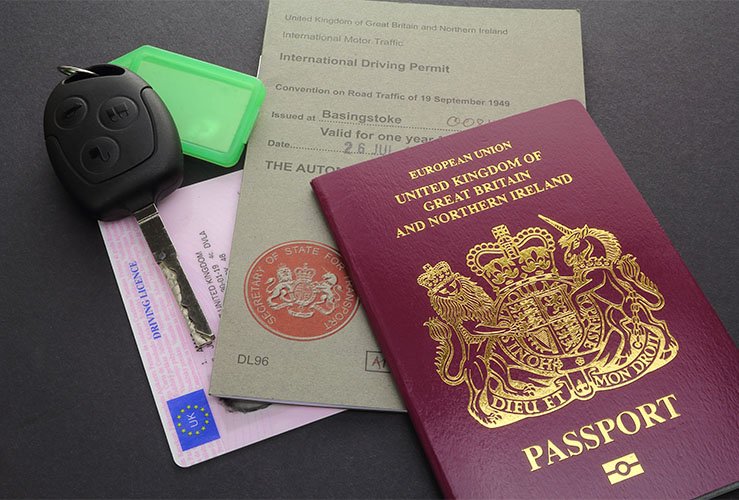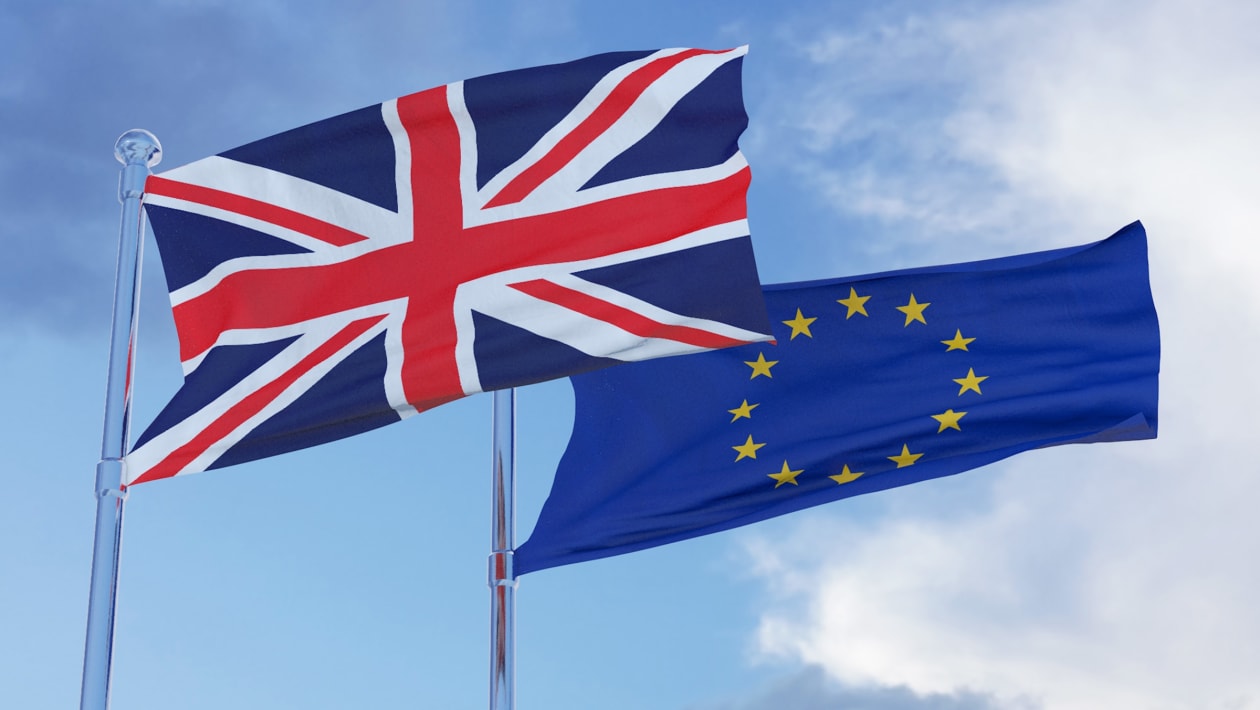
Driving In The European Union And The United Kingdom

Are you looking to explore the roads of Europe? Driving in the European Union and the United Kingdom can be an exciting and rewarding experience. Here, you can traverse winding mountain roads in Italy, speed along picturesque German autobahns, or take your time on leisurely drives through rural England – regardless of what type of adventure awaits, you must know a few things about driving there.
From distinctive national rules and regulations to special regulations governing foreigners – understanding how driving works across the EU and UK is essential for any traveller who wishes to ramp up their road-tripping adventures.
Whether deciphering foreign road signs or avoiding potential infractions while driving abroad, this blog post offers guidance on confidently hitting the road when exploring Europe. So join us as we dive into navigating EU and UK roads safely.
What To Expect When Driving In The European Union
Driving in European Union, or EU, countries is a great way to explore the continent. While many roadway regulations and standards are similar across most member states, there are some differences that travellers should be aware of to stay safe.
Rules of the road
The rules of the road when driving in the whole isle of man European Union are as follows:
-
Always drive on the right side of the road in the EU country.
-
Obey all posted speed limits
-
Yield to pedestrians
-
Wear a seatbelt
-
Use your headlights at night
-
Do not pass vehicles on the shoulder
-
Follow all signage
-
Carry all necessary documents
Speed limits
Speed limits in European Union countries vary from country to country and can range from 30 km/h (19 mph) in residential areas to 130 km/h (81 mph) on motorways or highways. You must adhere to these speed limits as cameras enforce them throughout European Union countries, and you may incur hefty fines if caught speeding.
kind of fuel to use
In European Union countries, drivers must use unleaded fuel (95 or 98 octaves) in their vehicles. Diesel fuel is also available in many locations.
Driving regulations
When driving in the European Union, there are certain regulations you should be aware of to stay safe on the roads. These include:
-
Always carry your EU paper driving licence, vehicle registration, and insurance documents
-
Keep headlights dipped when approaching other vehicles
-
Use indicator lights when changing lanes
-
Do not drink and drive
-
Obey all designated rest periods for drivers carrying dangerous goods
-
Stay alert while driving and avoid distractions such as cell phones or GPS devices
By following these road rules and regulations, you can ensure a safe and exciting adventure while driving in the European Union.
The Cost of tolls and parking
Tolls vary depending on the type of road traffic accident and the length of the journey. In most EU countries, drivers must pay tolls to use motorways and other major highways. Some tolls can be paid in cash, while others require a special card or tag purchased at the beginning of a journey and used for all subsequent toll payments.
Parking is also typically paid for, though some cities offer free parking. It’s best to check with your rental company before heading out on a drive to get an idea of what costs you may incur.
Signs and markings
The signage and road markings in EU countries are generally similar to those in the United States. For those driving in Europe, for example, blue signs indicate motorways or highways, while green card white signs indicate city streets. However, there are a few differences that you should be aware of when driving in European Union countries:
-
Yellow lines painted on the side of the road indicate that passing is prohibited
-
A red circle with a slash through it indicates “no entry.”
-
Arrows painted in the middle of the road indicate changes in direction
-
A yellow diamond-shaped sign with a black X through it means that the road is closed
By familiarizing yourself with signs and markings, you can ensure a smooth journey while driving in the European Union.
Roundabouts
Roundabouts are common in European Union countries, and it’s important to understand how they work. Unlike traffic lights and stop signs, roundabouts do not require drivers to come to a complete stop.
Instead, drivers must yield to any cars already in the circle, then enter and proceed in a counter-clockwise direction until they reach their desired exit. It’s important to remember that vehicles on the roundabout have the right of way, so always use your turn signal and wait for a gap in the traffic before entering or exiting.
What To Expect When Driving In The United Kingdom

Driving in the United Kingdom can be a pleasure: roads are often well-maintained, and the scenery can be breathtaking. While many of the rules for driving tests are similar to those in other countries, there are a few regulations that UK motorists must consider when driving tests.
Rules of the road
The rules of the road in the United Kingdom are as follows:
-
All passengers must wear seat belts
-
Right-hand turns can be taken at red traffic lights in some circumstances
-
Vehicles are not allowed to pass school buses that are stopped
-
Mobile phones cannot be used while driving unless they are hands-free
Speed limits
In the United Kingdom, speed limits vary depending on the type of road you are travelling on. On motorways, cars and light vehicles may travel up to 70mph (112km/h), while on single-carriageways, this limit is 60mph (97km/h). Speed limits for other types of roads can be found online or on signs along the route. It is important to obey these speed limits, as fines for exceeding them can be hefty.
kind of fuel to use
In the United Kingdom, petrol (gasoline) is commonly used in cars. A few countries do offer diesel-powered vehicles. However, checking with your rental company before booking a car is best. Most stations offer unleaded and leaded fuels for those who prefer the latter.
The Cost of tolls and parking
The Cost of tolls and parking in the United Kingdom can vary depending on the area you are travelling in. Tolls are often used to pay for major highways, tunnels, and bridges across England, Wales, and Scotland. Most tolls must be paid via cash or pre-paid accounts, with some roads offering contactless technology.
Parking fees vary in more than one country depending on the location but typically range from £1 – £4 per hour in city centres. Parking is free in most rural areas and villages, but check signs for restrictions.
Driving regulations
Driving regulations in the United Kingdom are as follows:
-
UK drivers must carry valid documents, including their UK driving licence, vehicle registration document, and insurance certificate such as a green insurance card
-
It would be best if you obey traffic signals
-
You are required to have a warning triangle in case of a breakdown
-
It is illegal to drive after consuming alcohol
-
You may be required to use headlights during the day
-
It is mandatory to display a no-smoking sign on all vehicles
On the left side of the road
Roads are driven on the left-hand side in the United Kingdom and other parts of the European Union. This is important to remember, as forgetting can be dangerous. It is also essential to pay attention to road signs and markings, as well as overtaking rules – when in doubt, it is best to err on the side of caution.
Roundabouts
Roundabouts are a common feature in the UK, and they can confuse drivers unfamiliar with them. It is important to remember that traffic always flows counterclockwise around roundabouts, and drivers entering must give way to those already on it.
Differences between driving in the European Union and the United Kingdom

When it comes to driving licenses in other EU countries in the European Union and the United Kingdom, there are a few differences you should be aware of:
Vehicle classes are different in the European Union and the United Kingdom. In the EU, cars are divided into categories C1 to C5 according to engine size and weight. At the same time, in the UK, UK-registered vehicle have a more traditional petrol, diesel, and electric system.
Driving licenses also differ between the two regions. In the EU, you can use your home country licenses for up to 90 days as long as it includes photo identification. Still, for
UK driving licences, you must apply for an International Driving Permit as a UK licence if you plan to do a or exchange your driving licence in exchange for an exchange in Europe or stay longer than 12 months.
Road signs and rules vary slightly across Europe, with each country having its own car, and unique regulations. For example, in France, there is a strict speed limit of 80 km/h on autoroutes, while in Germany, there is a more relaxed 120 km/h limit.
Traffic laws and enforcement also vary between the two regions. In the EU, there is a zero-tolerance policy for speeding and other traffic violations, while in the UK, police have more discretion to issue warnings instead of tickets or fines.
FAQs
Which is better for drivers – the European Union or the United Kingdom?
The two are very different when it comes to driving. Driving in the European Union is generally more relaxed than in the UK, with less stringent requirements for vehicle safety and lower speed limits on many roads.
On the other hand, the UK has driving laws and regulations that could be more restrictive than those in the EU. The EU and the UK offer exciting road trips with plenty of potential adventure. Which is best for you comes down to your personal preferences and driving style.
Do I need a special driving license or permit in Europe?
The answer depends on the local language and where you have your international driving permits and license. You will need an International Driving Permit (IDP) to drive in the United Kingdom.
In the European Union, you can use your regular driver’s licence issued paper license and license issued one’s license from a local one back home if it is in English and valid for your stay.
How to change your license plate
If you are driving in other European countries in a car registered in the European Union, you must display an EU license number or paper licence plate only. However, if your car is registered in any other country, you can use that country’s license plate while driving in the EU and UK.
What type of insurance do I need to drive?
It is mandatory to have vehicle and insurance cover when driving in the EU and UK. Depending on your country’s requirements for insurance coverage, you must purchase car insurance from a local or international insurance provider.
Conclusion
Driving in the European Union and the United Kingdom can be quite a unique experience compared to what we are used to in other parts of the world. With an understanding of both sets of driving laws and precautions before departure, one can make their time spent on the road as stress-free as possible.
It is important to remember that while both areas have some overlap in terms of rules, there are distinct differences between them – so always double-check the applicable legislation for a country before going ahead with any planned journeys.



